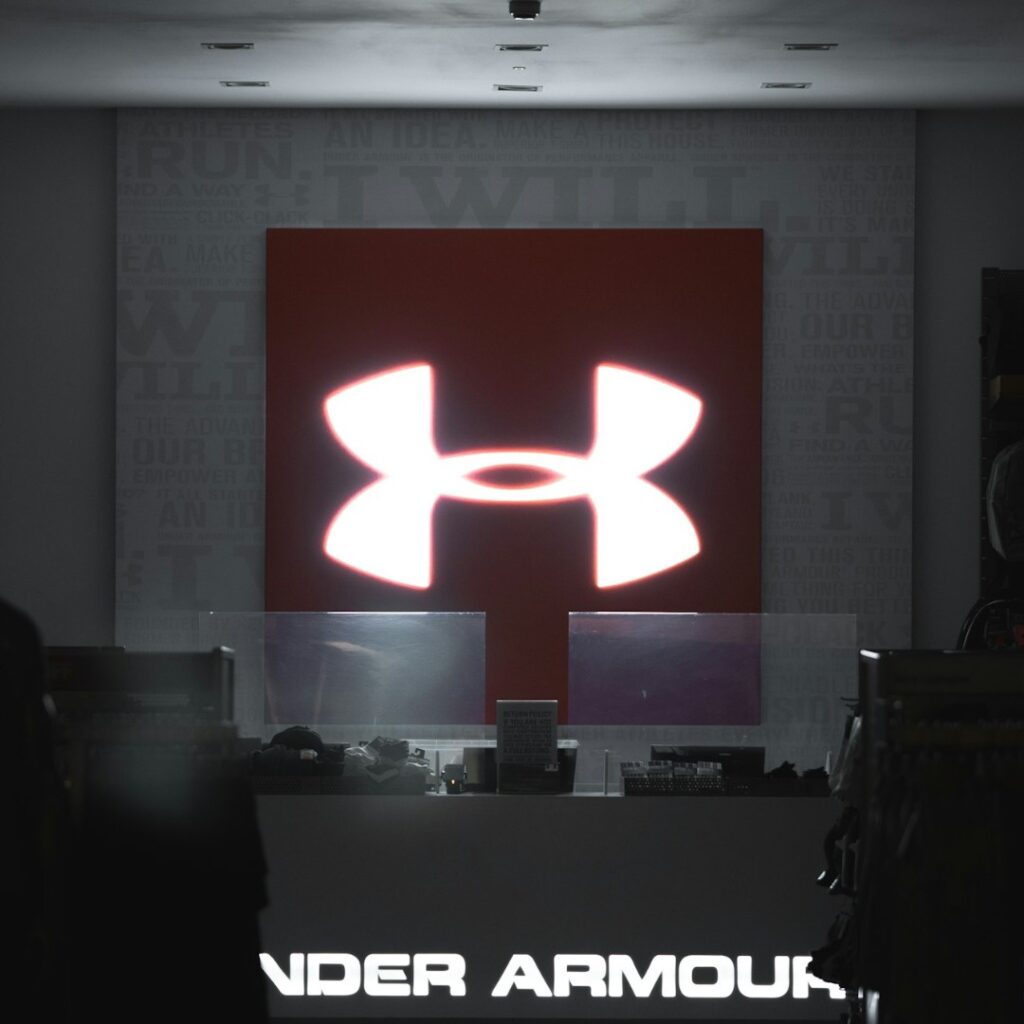Under Armour, a renowned American sportswear and casual apparel company, has carved out a significant niche in the highly competitive athletic wear market. Founded in 1996 by Kevin Plank, Under Armour has grown from a basement startup to a multi-billion-dollar brand. The company’s success can be attributed to its innovative products and robust marketing strategies. This article delves into the core components of Under Armour’s marketing strategy that have contributed to its substantial growth and market presence.
1. Product Innovation and Technology
At the heart of Under Armour’s marketing strategy is a commitment to innovation. The company was founded on the idea of creating a superior T-shirt, one that would enhance athletic performance by wicking away sweat and keeping athletes cool and dry. This initial product, the moisture-wicking shirt, set the tone for Under Armour’s ongoing focus on technological advancements.
Under Armour continually invests in research and development to introduce new materials and technologies that enhance athletic performance. Examples include their HeatGear® and ColdGear® lines, designed to keep athletes comfortable in various temperature conditions, and the UA HOVR™ cushioning technology in their footwear, which provides a ‘zero-gravity feel’ to maintain energy return and reduce impact.
2. Strong Brand Identity
Under Armour has built a strong brand identity centered around the concepts of performance, resilience, and innovation. The brand’s slogan, “Protect This House. I Will.,” emphasizes strength and determination, resonating deeply with athletes and fitness enthusiasts. This powerful brand messaging is consistently communicated across all marketing channels, reinforcing Under Armour’s position as a brand for serious athletes.
3. High-Profile Endorsements and Sponsorships
One of the key strategies Under Armour employs is securing high-profile endorsements and sponsorships. The company partners with top athletes and sports teams to enhance brand visibility and credibility. Notable endorsements include partnerships with athletes such as Stephen Curry (NBA), Tom Brady (NFL), and Lindsey Vonn (Olympic skier).
These endorsements are not just about having celebrities wear their products but about integrating the athletes into the brand’s story. For instance, Under Armour has developed signature product lines for some of its star athletes, like the Curry line of basketball shoes, which further cements the association between the brand and top-tier athletic performance.
4. Digital and Social Media Marketing
Under Armour leverages digital marketing and social media platforms to engage with its target audience effectively. The company uses platforms like Instagram, Twitter, and YouTube to share content that resonates with fitness enthusiasts and athletes. This includes behind-the-scenes looks at training sessions, motivational content, and user-generated content featuring customers using Under Armour products.
Under Armour also embraces innovative digital campaigns. One example is the “I Will What I Want” campaign, which highlighted stories of female athletes who have broken barriers and achieved greatness despite facing obstacles. This campaign went viral and significantly boosted brand engagement and visibility.
5. Direct-to-Consumer Sales and E-Commerce
Under Armour has been focusing on expanding its direct-to-consumer (DTC) sales channels, particularly through e-commerce. By selling directly to consumers through their website and mobile app, Under Armour can offer a more personalized shopping experience and build stronger customer relationships. This strategy also allows the company to collect valuable data on consumer preferences and behavior, which can be used to inform future product development and marketing efforts.
6. Strategic Partnerships and Collaborations
Another critical aspect of Under Armour’s marketing strategy is its strategic partnerships and collaborations. The company collaborates with technology firms to integrate innovative solutions into its products. For example, Under Armour acquired fitness app companies like MyFitnessPal and MapMyRun to create a connected fitness ecosystem, offering consumers a comprehensive suite of digital health and fitness tools.
Additionally, Under Armour collaborates with other brands and designers to create exclusive, limited-edition products that generate buzz and attract new customers. These collaborations help keep the brand fresh and relevant in the fast-paced world of fashion and sportswear.
7. Community Engagement and Corporate Social Responsibility
Under Armour is committed to giving back to the community and engaging in corporate social responsibility (CSR) initiatives. The company supports various youth sports programs and initiatives that promote health and fitness. For example, the Under Armour Undeniable Giveback program provides resources and opportunities for young athletes from underserved communities.
Furthermore, Under Armour emphasizes sustainability in its operations, working towards reducing its environmental impact through initiatives like the UA Green program, which focuses on sustainable product development and manufacturing processes.
Under Armour’s marketing strategy is a multi-faceted approach that combines product innovation, strong branding, strategic endorsements, and a robust digital presence. By continually evolving and adapting to market trends and consumer preferences, Under Armour has successfully positioned itself as a leading brand in the athletic wear industry. As the company continues to grow, its commitment to performance, innovation, and community engagement will undoubtedly remain at the core of its marketing efforts, driving further success in the years to come.




